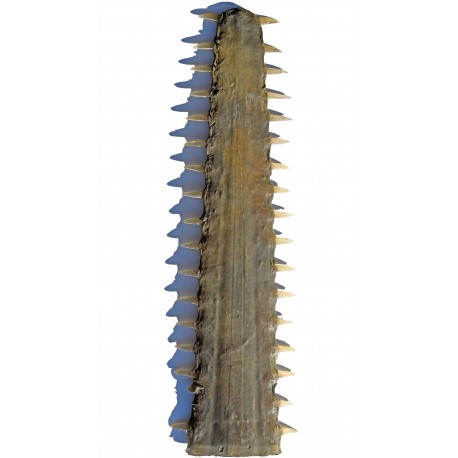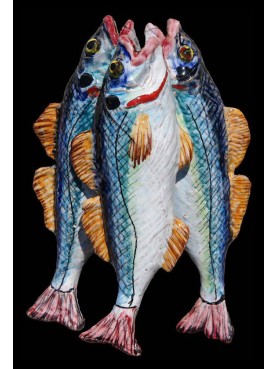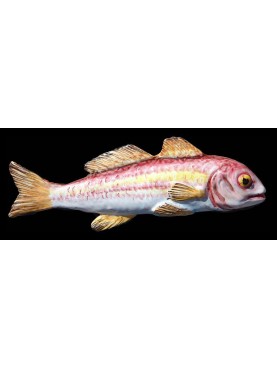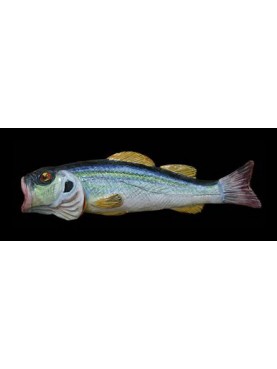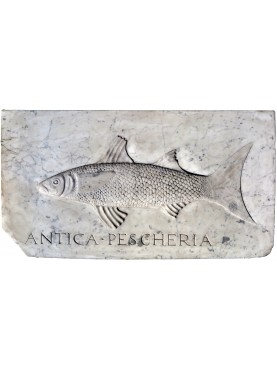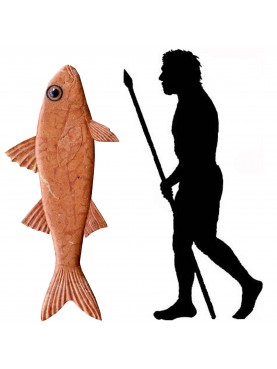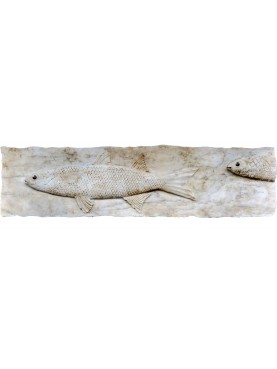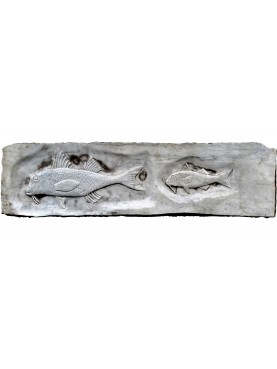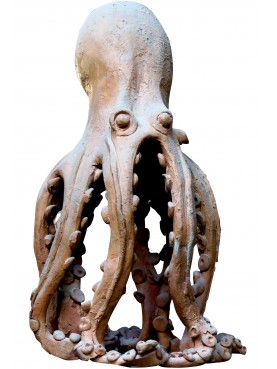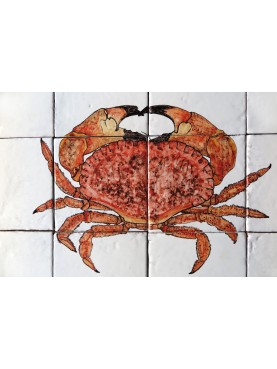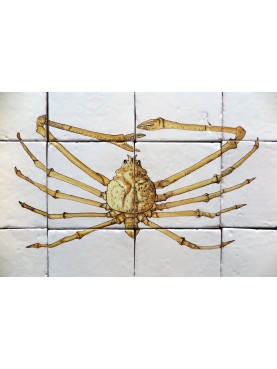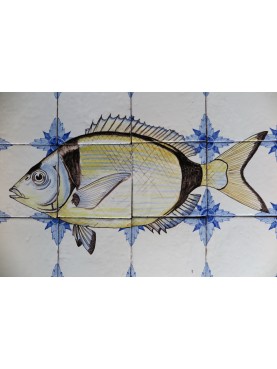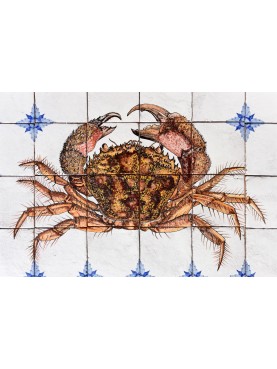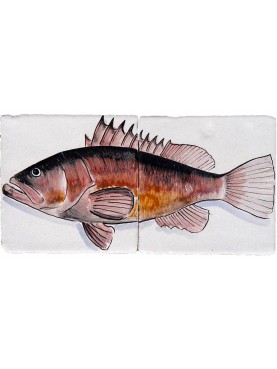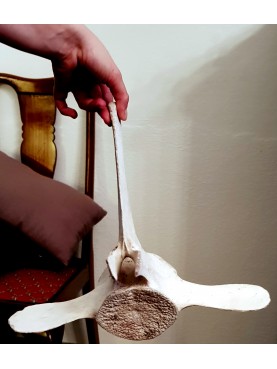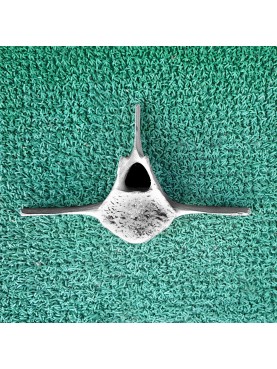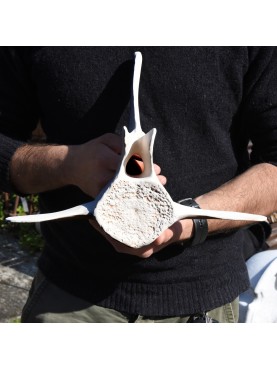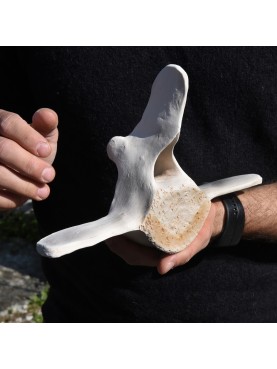Great resin rostrum Smalltooth sawfish - Pristis pectinata
Great resin rostrum Smalltooth sawfish - Pristis pectinata
12226
New
Huge sawfish rostrum (it is exactly one quarter of the total length of fish) in this case the Pristide was 173 inches (4.40 m) long.
Pristis pectinata (Latham, 1794), belonging to the Pristidae family.
Our resin production, From our own specimen.
Plaster and gum made of our own, handmade in our laboratory by Sebastian Lebigre.
2 Available
Data sheet
| Height | 43.31 in | 110 cm |
| Width | 12.2 in | 31 cm |
| Thickness | 1.97 in | 5 cm |
| Weight | 30.86 lbs | 14 Kg |
| Manufacturing | Recuperando srl | |
| Material | Resin | |
| Note 01 | Our specimen copy |
More info
Rostrum was purchased in the 60's in Livorno in a shells shop "Conchiglia Art", owner Mr. Angelo Leuzzi, Scali Adriano Novi Lena, Livorno.
The smalltooth sawfish (Pristis pectinata), also known as the wide sawfish, is a sawfish of the family Pristidae. It is found in shallow tropical and subtropical waters in coastal parts of the Atlantic, including the Mediterranean, and uses estuarine nursery areas. Reports from elsewhere are now believed to be misidentifications of other species of sawfish. This critically endangered species reaches a length of up to 7.6 metres (25 ft).
For many years, rarity of seeing a sawfish in the wild prevented scientists from collecting conclusive evidence about the use of their distinctive rostrum. This led them to falsely assume that the sawfish, like many other marine vertebrates with a “beak,” or an elongated rostrum, follow the rule that the appendage is used to either sense prey or capture prey, but never both. There are no other highly studied marine animals with similar rostral characteristics that have shown that the rostrum is used for both of these feeding techniques. Recent studies have demonstrated, however, that the sawfish utilize their rostrum to both sense and manipulate prey.
A sawfish’s saw is made up of thousands of sensory organs that allow them to detect and monitor the movements of other organisms by measuring the electric fields they emit.[5] The sensory organs, also called ampullary pores, are packed most densely on the dorsal side of its beak. This allows the fish to create an image of the three-dimensional area above it, even in waters of low-visibility. This provides support for the bottom-dwelling behavior of sawfish. Utilizing their saw as an extended sensing device, sawfish are able to “view” their entire surroundings by maintaining a position low to the sea floor.
Sawfish uncover sand dwelling crustaceans and mollusks, two common prey types, by using their unique anatomical structure as a tool for digging and grubbing about in sand or mud. The sawfish churn up the sea bottom with their exaggerated rostrum to uncover these hidden food sources.
It is believed that the elongated rostrum first evolved for its use in prey immobilization. Smalltooth sawfish have been observed to approach large shoals of fish while striking their saw rapidly from side to side. Due to the high density of small fish in a shoal, there is a high probability that the sawfish will hit, stab, stun, or kill several prey during one shoal attack. The sawfish has also been observed to attack larger prey by using their weapon to dislodge large pieces of meat from victims. They then use their serrated saw teeth to tear through flesh.
Vertebrate biologist Barbara Wueringer, of the University of Queensland, demonstrated that sawfish use their extended rostrum to detect and manipulate prey. She observed the animals’ reaction to food already at the bottom of the tank, food falling from the water's surface, and introduced electric dipoles. When the sawfish came across scraps of fish resting on the bottom of the tank, it used its rostrum to pin the “prey” down as it swam over and engulfed it. When food was identified as it fell through the water, the sawfish would approach its “prey” from the side and swiftly strike to impale the victim with the teeth of its saw. Both of these cases support the respective digging and attacking behaviors expected from feeding sawfish in the wild. In order to show that sawfish use their beak to sense their surroundings, Wueringer placed electric dipoles throughout the tank to simulate the electrical signals that surround moving prey. Just as the sawfish displayed different aggressive behaviors towards the “prey,” they also responded differently based on the electrical signals they received by either avoiding or approaching the signal source. With this evidence, the sawfish is now regarded as the only jawed fish to use its rostrum for both prey detection and manipulation.

